- Back to Home »
- Our terror over flying has cost us
 Asiana Airlines Flight 214 sits just off the runway at San Francisco International Airport on Sunday, July 7, in a handout photo from the National Transportation Safety Board. The Boeing 777 coming from Seoul, South Korea, crashed on landing on Saturday, July 6.
Asiana Airlines Flight 214 sits just off the runway at San Francisco International Airport on Sunday, July 7, in a handout photo from the National Transportation Safety Board. The Boeing 777 coming from Seoul, South Korea, crashed on landing on Saturday, July 6. 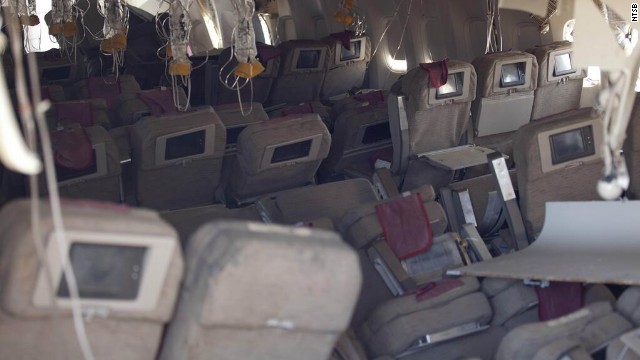 On July 7, the NTSB released this photo showing the inside of the aircraft.
On July 7, the NTSB released this photo showing the inside of the aircraft. 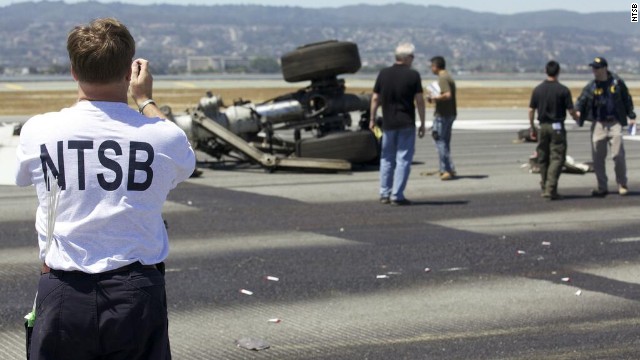 An investigator photographs part of the landing gear at the crash site in a handout released on July 7. The NTSB's preliminary assessment of the plane's cockpit and flight data recorders shows the flight was coming in too slow and too low.
An investigator photographs part of the landing gear at the crash site in a handout released on July 7. The NTSB's preliminary assessment of the plane's cockpit and flight data recorders shows the flight was coming in too slow and too low. 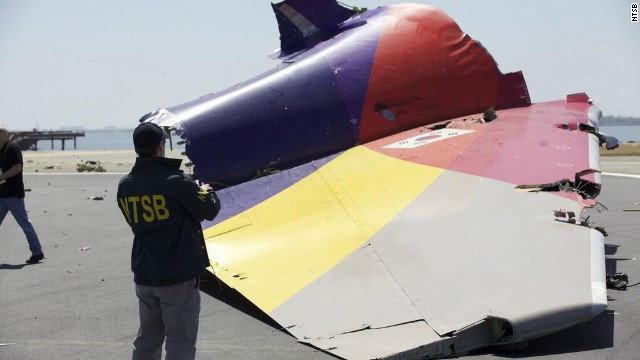 An investigator inspects the broken-off tail of the plane in a handout photo released July 7. The crash killed two people, injured 182 and forced the temporary closure of one of the country's largest airports.
An investigator inspects the broken-off tail of the plane in a handout photo released July 7. The crash killed two people, injured 182 and forced the temporary closure of one of the country's largest airports. 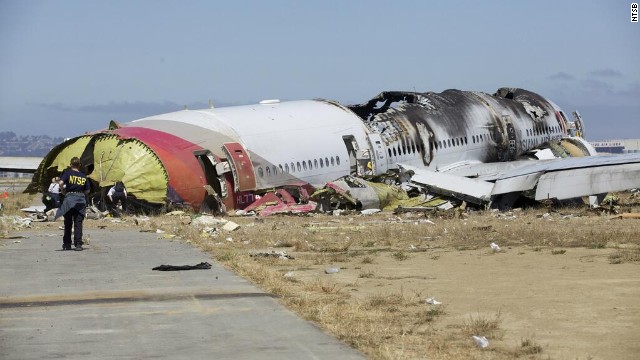 An investigator stands near the tail of the plane in a handout photo released on July 7. The NTSB has ruled out weather as a problem and said that conditions were right for a "visual landing."
An investigator stands near the tail of the plane in a handout photo released on July 7. The NTSB has ruled out weather as a problem and said that conditions were right for a "visual landing." 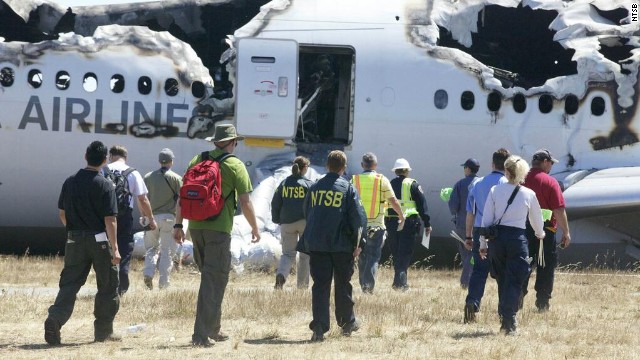 Investigators approach the crash in a handout photo released on July 7.
Investigators approach the crash in a handout photo released on July 7. 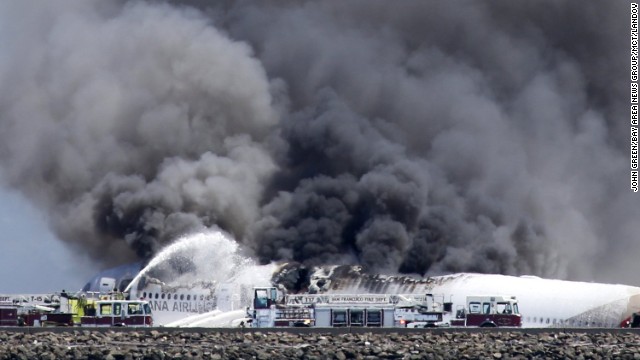 Fire crews attempt to quench the blaze on Saturday, July 6.
Fire crews attempt to quench the blaze on Saturday, July 6. 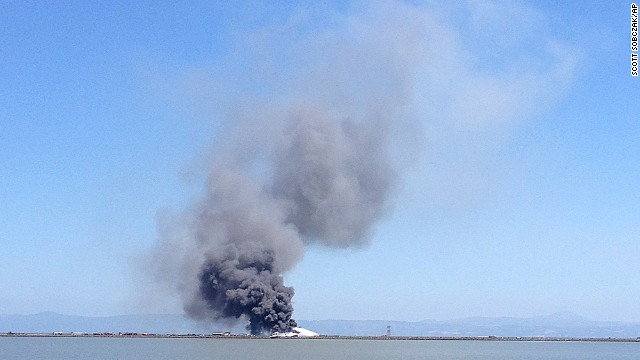 Smoke rises from the crash site across the San Francisco Bay on July 6.
Smoke rises from the crash site across the San Francisco Bay on July 6. 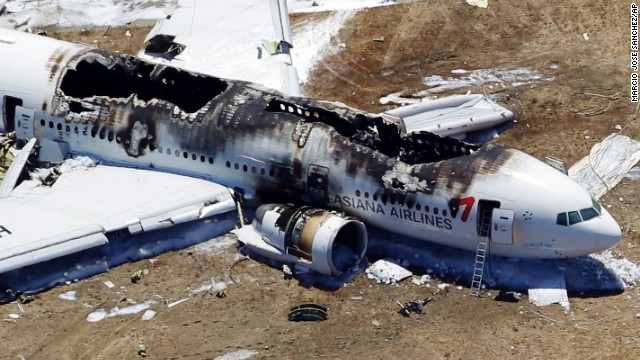 Asiana Airlines Flight 214 remains on the runway on July 6.
Asiana Airlines Flight 214 remains on the runway on July 6. 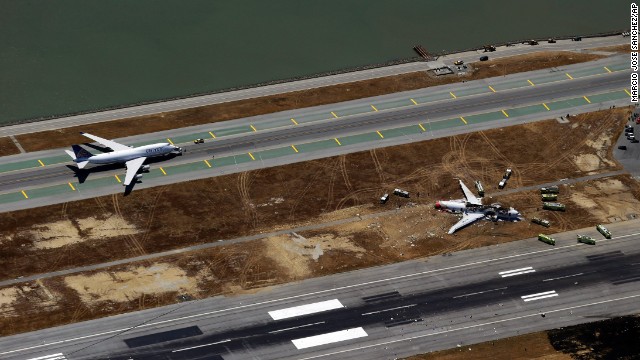 A plane sits on the runway on July 6 while emergency crews tend to the crash site.
A plane sits on the runway on July 6 while emergency crews tend to the crash site. 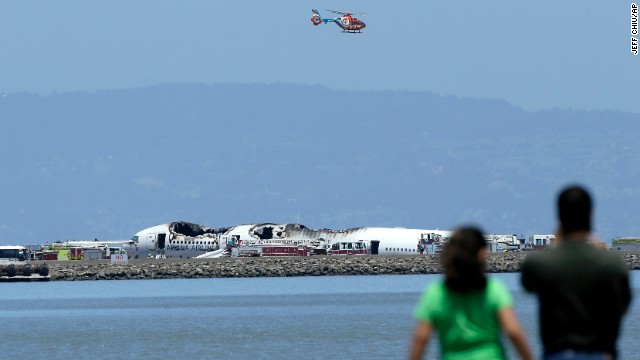 A helicopter flies above the wreckage on July 6 as people observe from across the waters of San Francisco Bay.
A helicopter flies above the wreckage on July 6 as people observe from across the waters of San Francisco Bay. 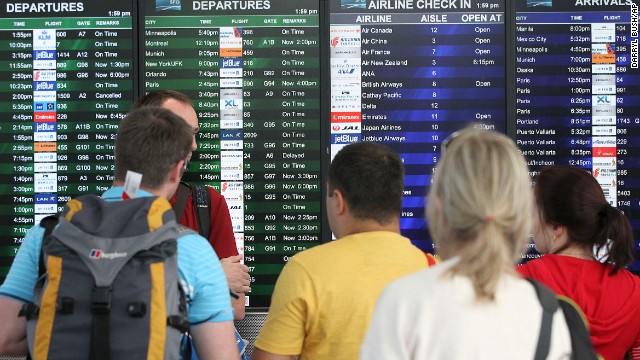 Travelers at San Francisco International Airport look at the departures and arrivals board after Asiana Flight 214 crashed on July 6. The airport, located 12 miles south of downtown San Francisco, is California's second busiest, behind Los Angeles International.
Travelers at San Francisco International Airport look at the departures and arrivals board after Asiana Flight 214 crashed on July 6. The airport, located 12 miles south of downtown San Francisco, is California's second busiest, behind Los Angeles International.  Kevin Cheng talks on his phone as he waits in the terminal after Asiana Airlines Flight 214 crash-landed on July 6. He said he was supposed to pick up students who were on board the flight from Seoul.
Kevin Cheng talks on his phone as he waits in the terminal after Asiana Airlines Flight 214 crash-landed on July 6. He said he was supposed to pick up students who were on board the flight from Seoul. 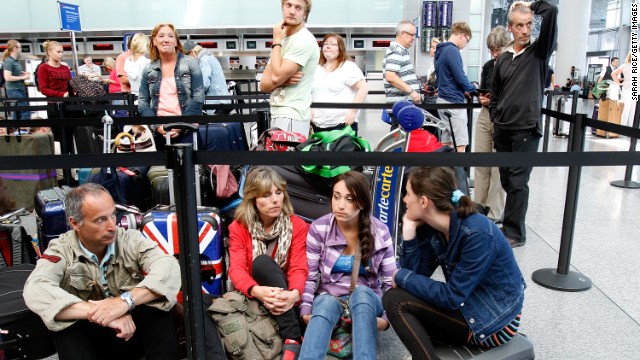 Passengers wait for the British Airways counter to reopen at San Francisco International Airport on July 6.
Passengers wait for the British Airways counter to reopen at San Francisco International Airport on July 6. 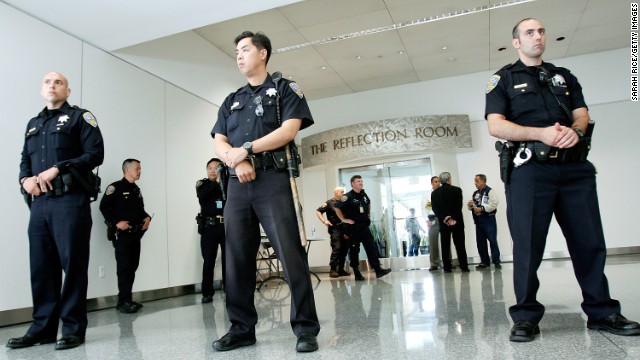 Police guard the Reflection Room at the San Francisco airport's international terminal, where passengers from Asiana Airlines Flight 214 were reportedly gathering after the crash landing on July 6.
Police guard the Reflection Room at the San Francisco airport's international terminal, where passengers from Asiana Airlines Flight 214 were reportedly gathering after the crash landing on July 6. 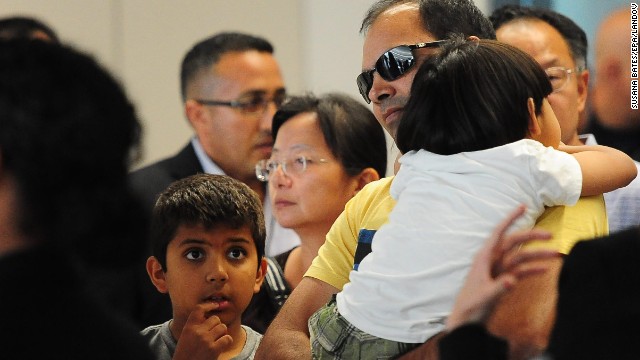 People are escorted from the Reflection Room at the San Francisco International Airport on July 6.
People are escorted from the Reflection Room at the San Francisco International Airport on July 6. 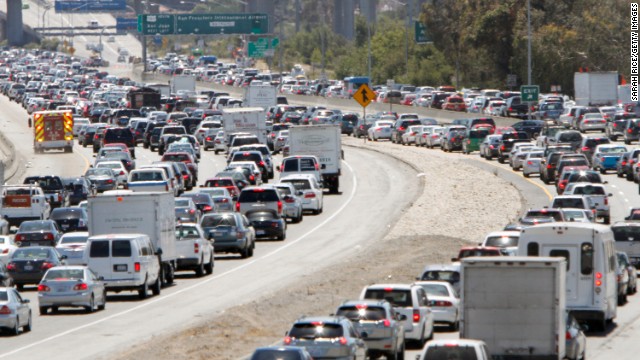 Traffic backs up on U.S. Route 101 South in San Francisco on July 6. The Bay Area airport was closed to incoming and departing traffic after the crash, according to the Federal Aviation Administration.
Traffic backs up on U.S. Route 101 South in San Francisco on July 6. The Bay Area airport was closed to incoming and departing traffic after the crash, according to the Federal Aviation Administration. 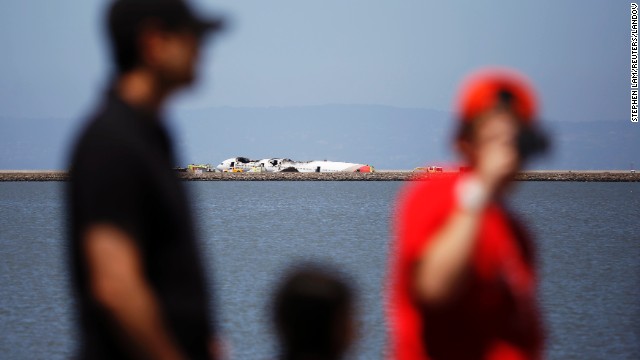 People look over the wreckage across a cove in San Francisco Bay on July 6.
People look over the wreckage across a cove in San Francisco Bay on July 6. 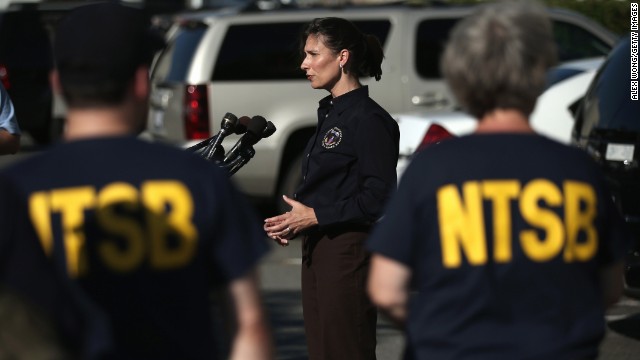 Deborah Hersman, chairwoman of the National Transportation Safety Board, speaks to the press at Reagan National Airport in Arlington, Virginia, before departing for San Francisco with an NTSB crew on July 6 to investigate the crash site.
Deborah Hersman, chairwoman of the National Transportation Safety Board, speaks to the press at Reagan National Airport in Arlington, Virginia, before departing for San Francisco with an NTSB crew on July 6 to investigate the crash site. 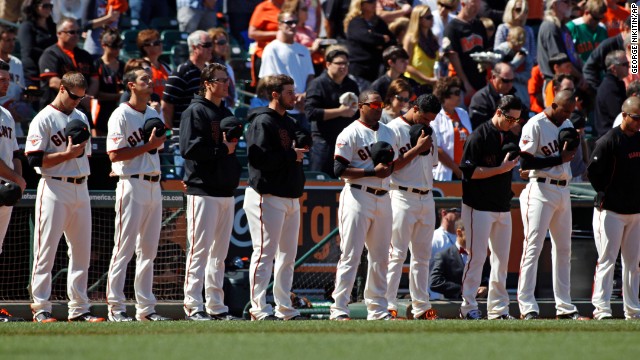 The San Francisco Giants observe a moment of silence for those killed and hurt in the crash before their baseball game on July 6 against the Los Angeles Dodgers at AT&T Park in San Francisco.
The San Francisco Giants observe a moment of silence for those killed and hurt in the crash before their baseball game on July 6 against the Los Angeles Dodgers at AT&T Park in San Francisco. 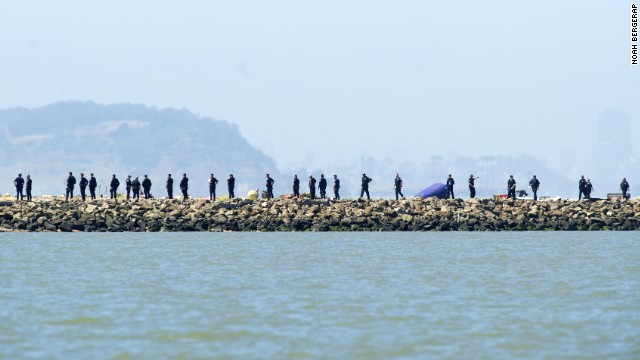 Crews comb the end of a San Francisco airport runway following the crash landing on July 6.
Crews comb the end of a San Francisco airport runway following the crash landing on July 6. 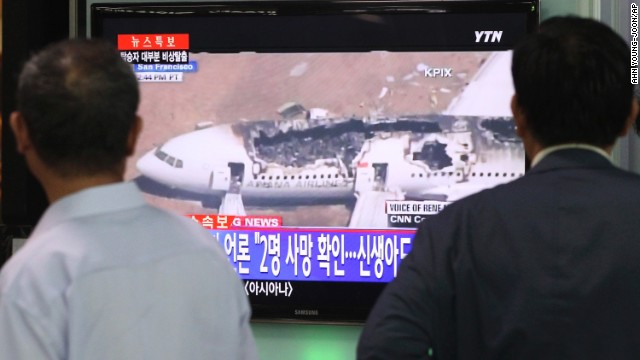 People in Seoul watch a news program reporting about the crash landing on July 6 in San Francisco. Asiana Airlines Flight 214 took off from Seoul earlier Saturday.
People in Seoul watch a news program reporting about the crash landing on July 6 in San Francisco. Asiana Airlines Flight 214 took off from Seoul earlier Saturday. 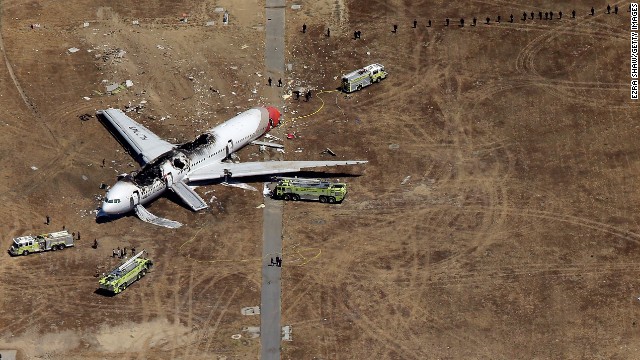 The plane crashed on July 6 around 11:30 a.m. (2:30 p.m. ET).
The plane crashed on July 6 around 11:30 a.m. (2:30 p.m. ET).  People walk past the wreckage of the plane's tail on July 6.
People walk past the wreckage of the plane's tail on July 6.  The burned-out plane remains on the runway on July 6. Passengers and crew members escaped down the emergency inflatable slides.
The burned-out plane remains on the runway on July 6. Passengers and crew members escaped down the emergency inflatable slides. 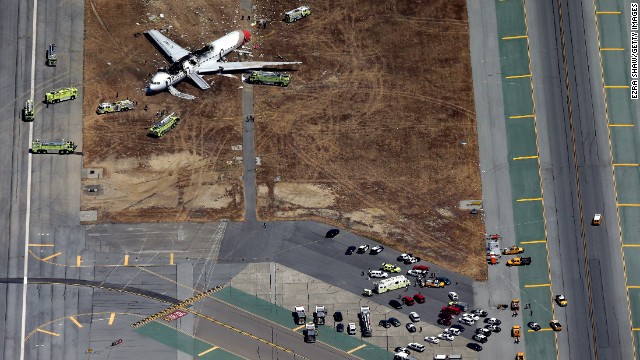 Rescue workers tend to the crash site on July 6.
Rescue workers tend to the crash site on July 6. 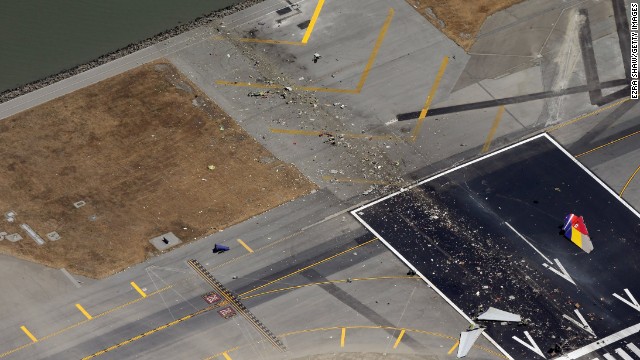 Debris litters the runway on July 6.
Debris litters the runway on July 6. 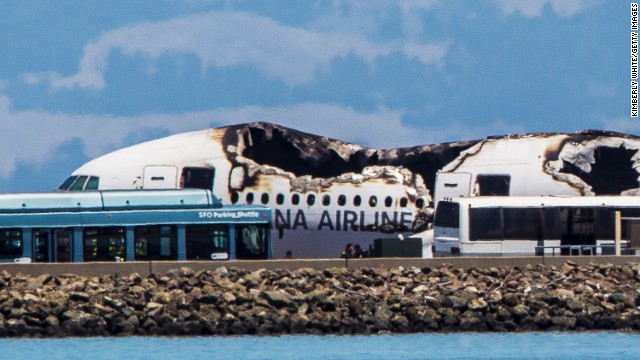 Airport shuttles arrive on the scene after the crash landing.
Airport shuttles arrive on the scene after the crash landing. 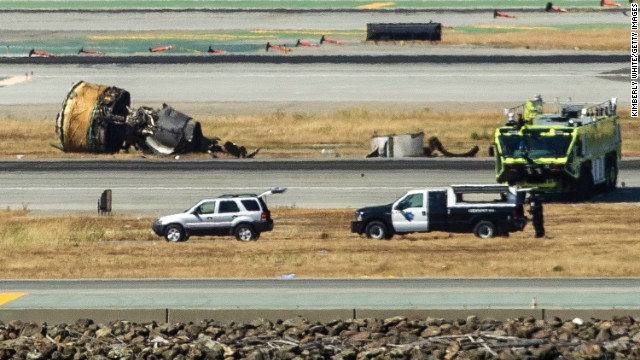 Wreckage from the Boeing 777 lies on the tarmac on July 6.
Wreckage from the Boeing 777 lies on the tarmac on July 6. 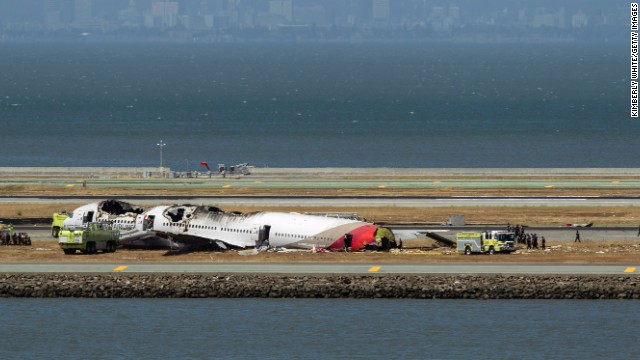 Crews surround the remains of the plane on July 6.
Crews surround the remains of the plane on July 6. 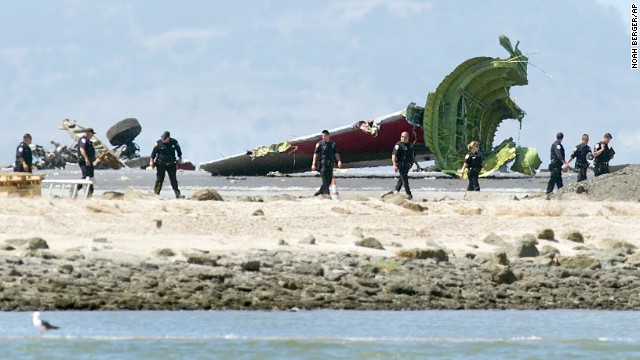 Investigators pass the detached tail and landing gear of Asiana Airlines Flight 214 on July 6.
Investigators pass the detached tail and landing gear of Asiana Airlines Flight 214 on July 6. 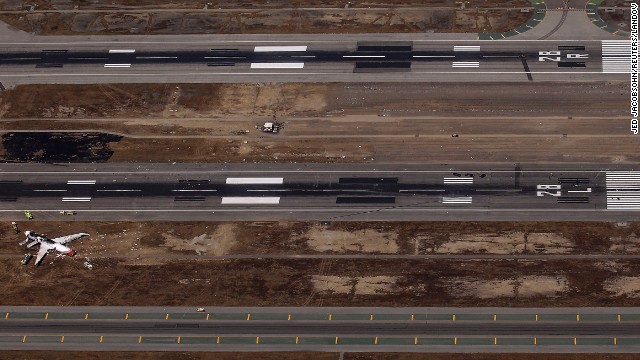 An aerial view shows the site of the crash landing between the runways on July 6.
An aerial view shows the site of the crash landing between the runways on July 6. 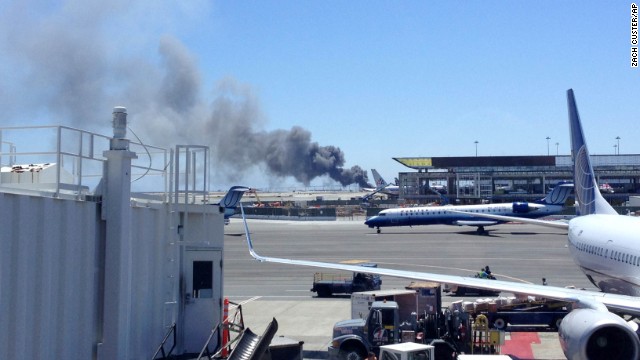 Smoke rises from the crash site on July 6 at the airport in San Francisco.
Smoke rises from the crash site on July 6 at the airport in San Francisco. 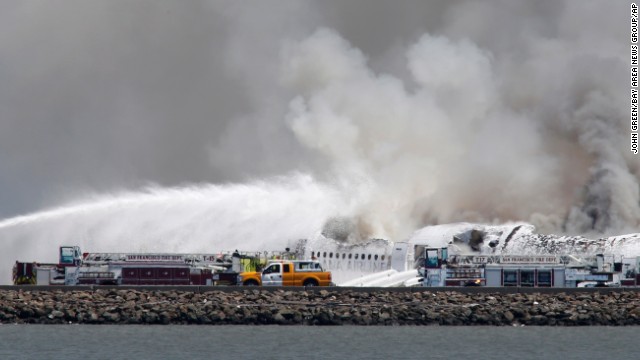 Fire crews work at the crash site at San Francisco International Airport on July 6.
Fire crews work at the crash site at San Francisco International Airport on July 6. 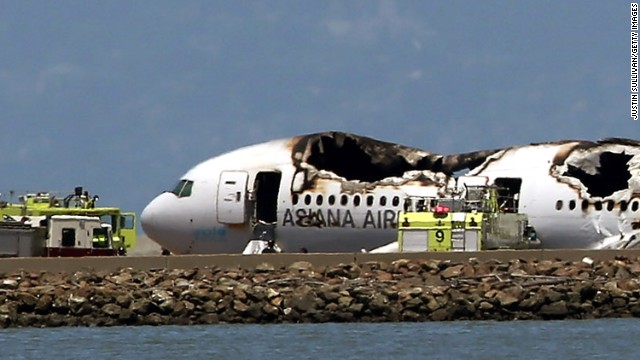 The Boeing 777 lies burned on the runway after it crashed landed on July 6.
The Boeing 777 lies burned on the runway after it crashed landed on July 6. 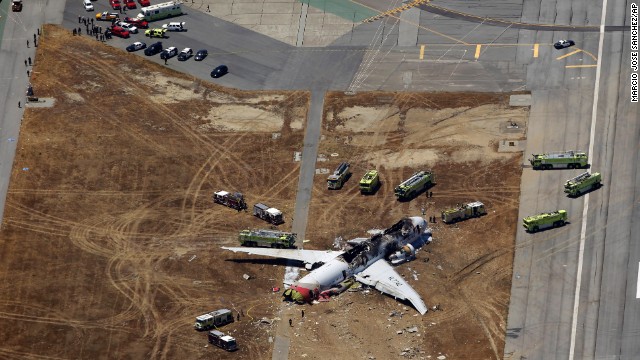 An aerial photo of the scene on July 6 shows the extent of the plane's damage.
An aerial photo of the scene on July 6 shows the extent of the plane's damage. 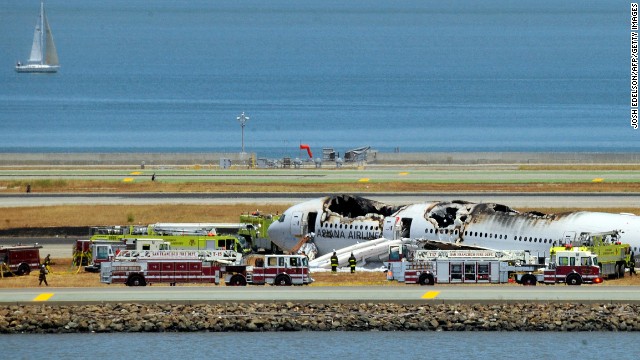 The burned-out plane sits surrounded by emergency vehicles on July 6.
The burned-out plane sits surrounded by emergency vehicles on July 6.  CNN iReporter Amanda Painter took this photo while waiting at the San Francisco airport on July 6. The entire airport has shut down and flights diverted to other airports.
CNN iReporter Amanda Painter took this photo while waiting at the San Francisco airport on July 6. The entire airport has shut down and flights diverted to other airports.  iReporter Val Vaden captured this photo while waiting in a departure lounge at the San Francisco airport on July 6. Val observed the billowing smoke and emergency responders' rush in.
iReporter Val Vaden captured this photo while waiting in a departure lounge at the San Francisco airport on July 6. Val observed the billowing smoke and emergency responders' rush in. 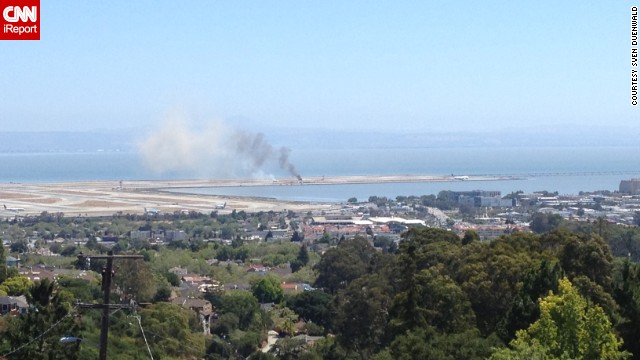 iReporter Sven Duenwald was at home on July 6 when he saw smoke rising into the air near the San Francisco International Airport.
iReporter Sven Duenwald was at home on July 6 when he saw smoke rising into the air near the San Francisco International Airport. 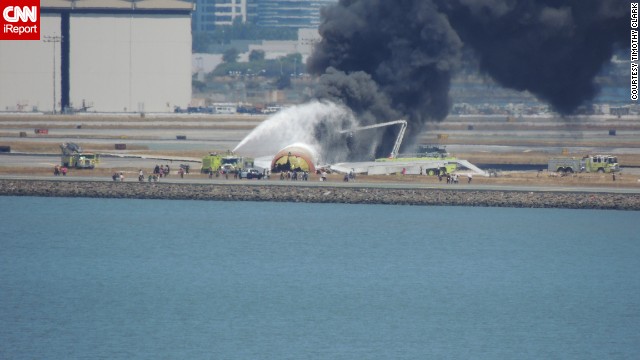 iReporter Timothy Clark was standing on the eighth floor of the Embassy Suites Airport Hotel when he heard a loud crashing sound from outside. "My daughter told me she heard a plane crash. I used my camera to get a clearer view and I could see a dust cloud. Then people running from the plane, then flames," he said.
iReporter Timothy Clark was standing on the eighth floor of the Embassy Suites Airport Hotel when he heard a loud crashing sound from outside. "My daughter told me she heard a plane crash. I used my camera to get a clearer view and I could see a dust cloud. Then people running from the plane, then flames," he said. 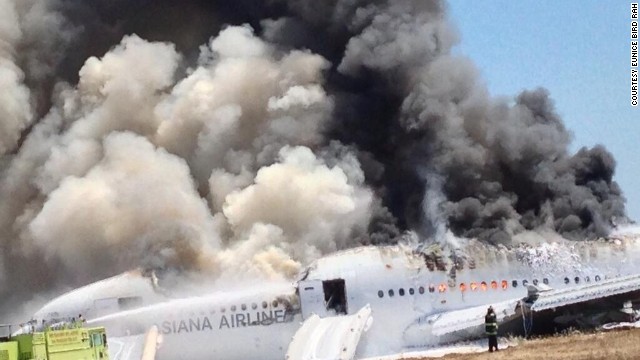 A photo provided to CNN by Eunice Bird Rah -- and shot by her father, who was a passenger on the plane -- shows flames and smoke bursting out of many of the aircraft's windows.
A photo provided to CNN by Eunice Bird Rah -- and shot by her father, who was a passenger on the plane -- shows flames and smoke bursting out of many of the aircraft's windows. 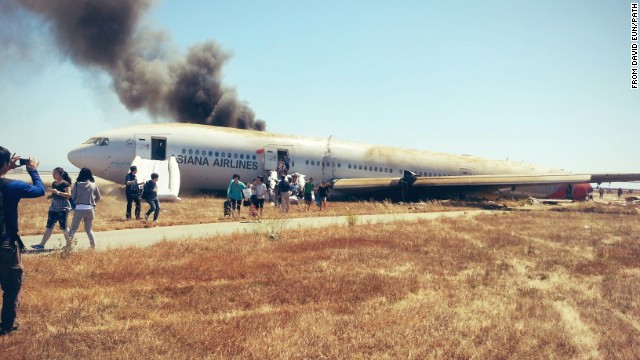 David Eun, a passenger on Asiana Airlines Flight 214, posted this image to Path.com along with the message, "I just crash landed at SFO. Tail ripped off. Most everyone seems fine, I'm ok. Surreal..." It was one of the first photographs taken after the crash.
David Eun, a passenger on Asiana Airlines Flight 214, posted this image to Path.com along with the message, "I just crash landed at SFO. Tail ripped off. Most everyone seems fine, I'm ok. Surreal..." It was one of the first photographs taken after the crash. 
1

2

3

4

5

6

7

8

9

10

11

12

13

14

15

16

17

18

19

20

21

22

23

24

25

26

27

28

29

30

31

32

33

34

35

36

37

38

39

40

41

42

43
- Frida Ghitis once on flight that made aborted landing, then landed safely
- She says fatalities rare but air travel draws primal fear that dangerous travel modes don't
- She says 9/11 drastically changed the cost of flying; U.S. spends lavishly on air safety
- Ghitis: While relatively safe, will never be completely predictable or 100% incident free
Editor's note: Frida Ghitis is a world affairs columnist for The Miami Herald and World Politics Review. A former CNN producer and correspondent, she is the author of "The End of Revolution: A Changing World in the Age of Live Television." Follow her on Twitter: @FridaGColumns.
(CNN) -- Everything looked perfectly normal as the plane prepared to land. I fastened my seat belt and looked through the window, watching the toy cars on the highway below gradually grow to life-size, and the airport runway rapidly -- too rapidly, perhaps -- move almost within arms' reach. The plane touched down, barreled ahead on the tarmac for a couple of seconds, and suddenly raised its nose and roared back up to the sky pressing us against our seat backs while climbing at a frighteningly steep angle.
What happened, we wondered wordlessly. What's coming next?
What came next was an anxious circling back to the airport followed by a smooth landing and not much of an explanation about what had gone wrong. By then, our heartbeats had mostly returned to normal.
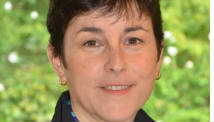
The story did not end the same way for passengers of Asiana flight 214, which crashed on landing in San Francisco last weekend, leaving two young women dead and scores injured.
The Asiana disaster continues to rivet our attention. We want to know exactly what went wrong. But that's not only because it was a terrible tragedy for many families. It's that air flight commands so much interest.
The San Francisco disaster is receiving much more attention, for example, than the horrifying runaway train crash in Canada that razed a town and killed at least 15 people, with another 45 still missing. We give far more attention to plane crashes that kill a small number of people than to, say, car fatalities, which killed more than 32,000 people in the U.S. alone last year.
Each death is devastating and should be mourned, but our attention, in proportion to the risk and the death "tool" is much greater when it comes to flying.
The experts have told us the statistics. Flying is almost perfectly safe. Even when disaster does occur, as with this weekend's flight, the numbers are extraordinary. More than 99.3% of the 307 people on board the Asiana flight survived.
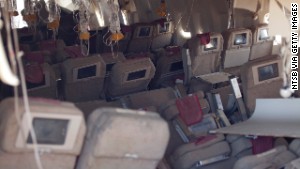 NTSB: Plane set in many autopilot modes
NTSB: Plane set in many autopilot modes 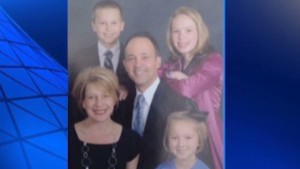 Alaska crash victims were 'spectacular'
Alaska crash victims were 'spectacular' 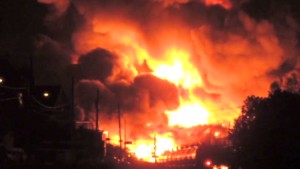 Canadian police widen train investigation
Canadian police widen train investigation It's much more dangerous to do almost anything, the statistics tell us, than to fly. Billions of people fly every year and almost zero percent of them die in the process. The risk is comparable, we're told, to that of dying from a ceiling collapse at a grocery store.
And yet, the reassuring statistics penetrate our collective fears as slowly as a worn drill bit cutting into stone.
Flying remains a surreal, magical experience, but one that -- even among those who will adamantly deny it -- is framed by a twinge of irrational fear. The experience of climbing on an airplane and watching it defy gravity, break through the clouds and glide across the sky remains a barely comprehensible human achievement; it feels like a challenge against the laws of nature.
Flying has a powerful emotional hold on us. There is something sublime about humans looking down upon the clouds. But the experience also packs the truth about our mortality more transparently than almost anything we do.
When we are sitting in that cargo-packed aluminum tube, mocking the earth's pull, the thought that something could go badly wrong tends to sneak into our consciousness. A spell of strong turbulence can sharply shift the collective mood on board, no matter what the statistics. It's no wonder some people refuse to fly without a strong infusion of thought-quieting alcohol.
It is that outsized emotional power of flight that makes plane crashes or news about near misses compel our attention, even when the casualties remain (fingers crossed!) so remarkably low.
There is, of course, a grave downside to the exalted place on which we keep our fear of air disaster. There is a reason terrorists have so often used flights as the means to inflict terror. They know we pay attention, they know we are primed for fear.
Not surprisingly, such a powerful primal response comes with a price tag. As a society, we spend enormous sums and we endure endless discomfort trying to do everything we can to make flying safe, or at least to make many of us feel as though we've made it safe.
The 9/11 attackers, who used passenger aircrafts as weapons produced such a strong reaction that they drastically changed the flying experience and the cost of flying. Some put the total 9/11 tally at trillions, most of it from America's intense reaction to the hit.
The Transportation Security Administration spends $8 billion per year shepherding us through endless security lines. We obediently stand in the queue, adding countless hours and enormous inconvenience, hoping it all amounts to more than security theatre.
In the aftermath of my aborted landing, I spent hours trying to dig out the facts of what had occurred, as I have done after other, much scarier flying experiences involving engine failures, jammed landing gears and blown tires. Anyone who has traveled extensively, particularly in remote parts of the world, has a few stories to tell about airborne misadventures.
First I asked a flight attendant what happened when I was leaving the plane. She said there was "probably" something blocking the runway on our first landing attempt. I looked up the public records of flight incidents and was surprised to find no sign of my obviously not routine incident. I called the airline and was told, much to my surprise, that these kinds of "touch and go" and "go around" incidents are quite routine, barely meriting a note in the log, and that there was probably another aircraft on the runway, perhaps an air traffic controller mistake.
Then I called the Federal Aviation Administration. The FAA said their logs showed no sign that such a thing had occurred. I called the airline again, pointing to the FAA's denial of their story. After much insistence and many phone calls and emails I was finally told it was the pilot who "was not comfortable" with the landing he was executing.
Flying, it seems, will never be completely predictable or 100% incident free.
Follow @CNNOpinion on Twitter.
Join us at Facebook/CNNOpinion.
The opinions expressed in this commentary are solely those of Frida Ghitis.







